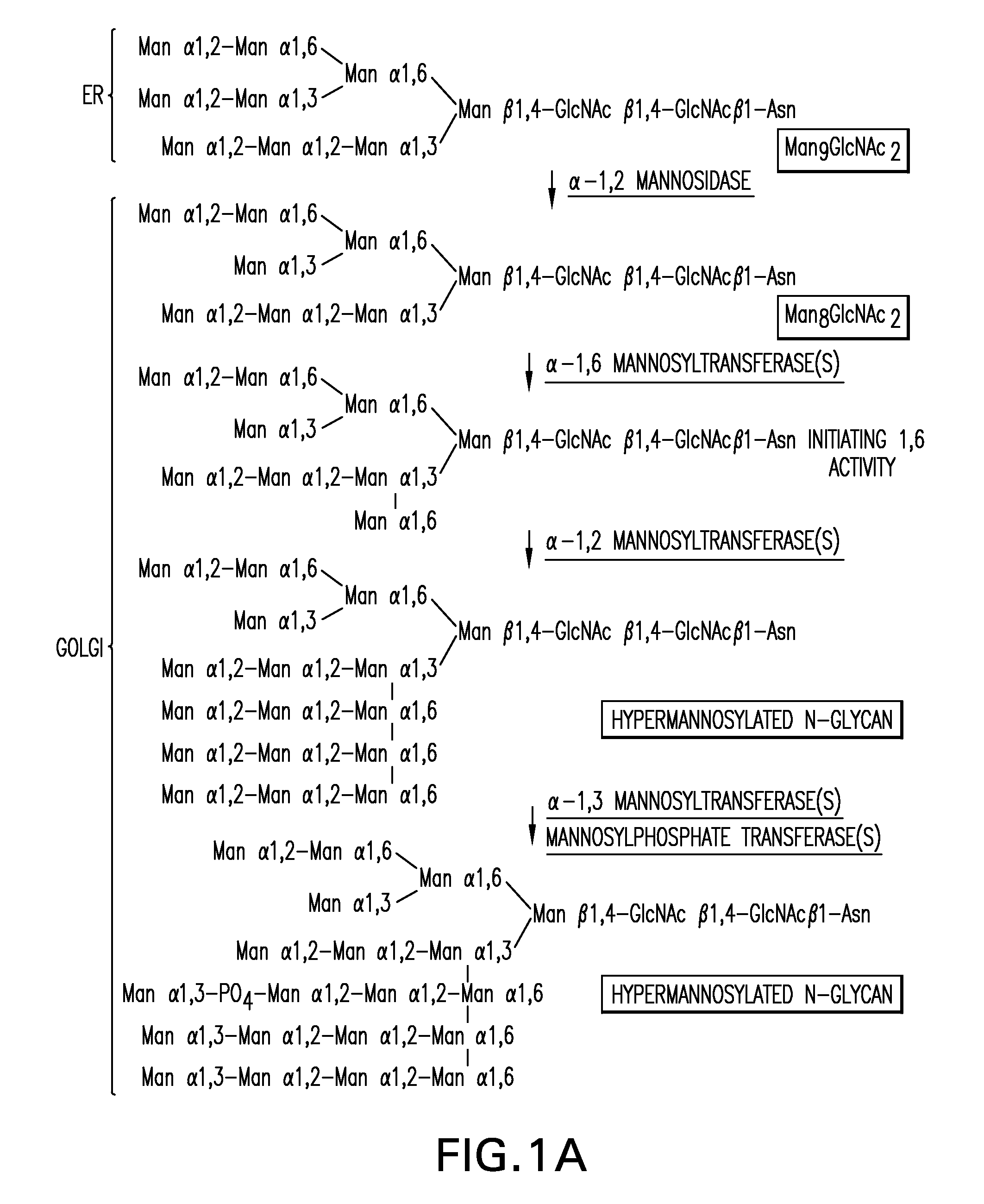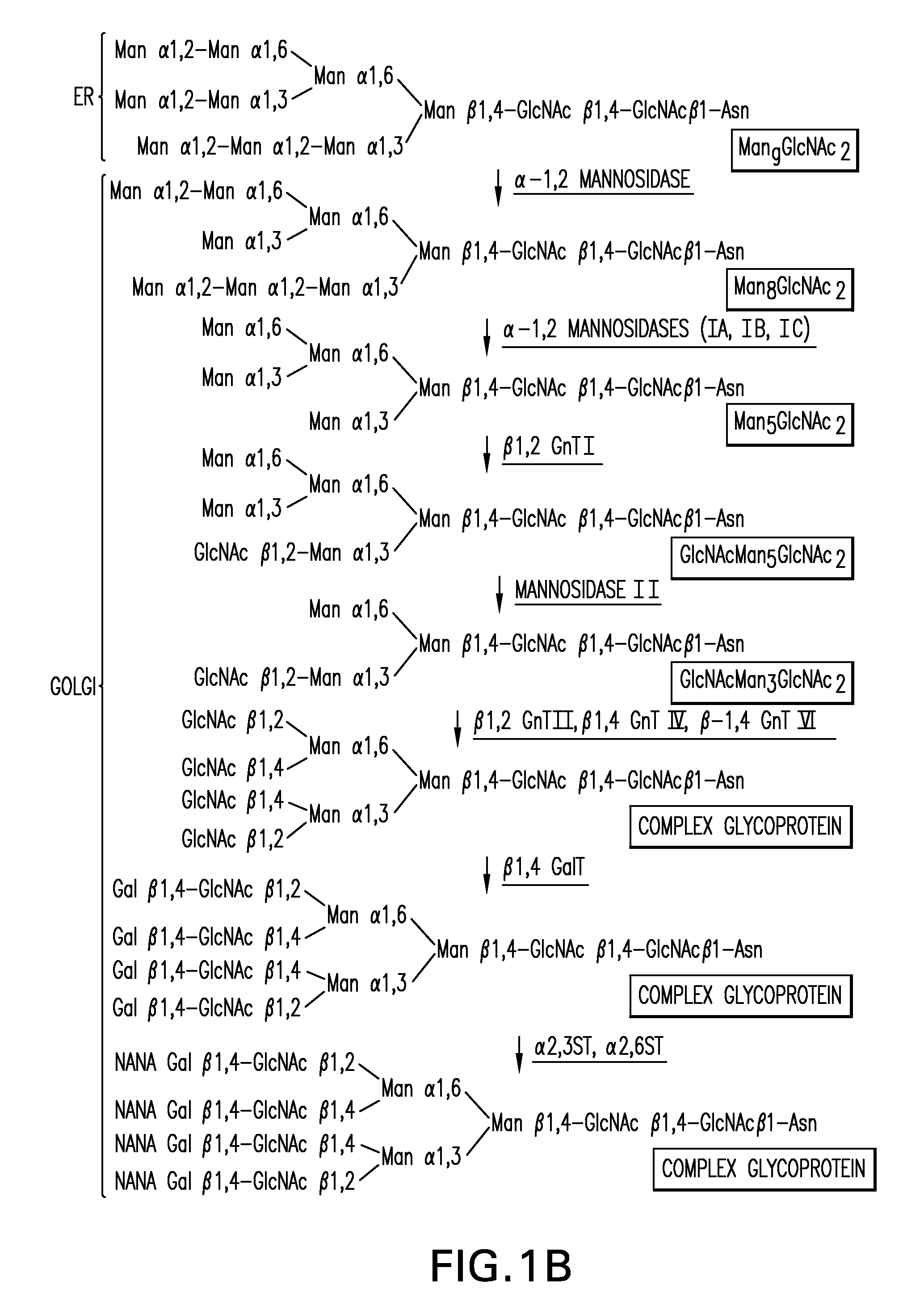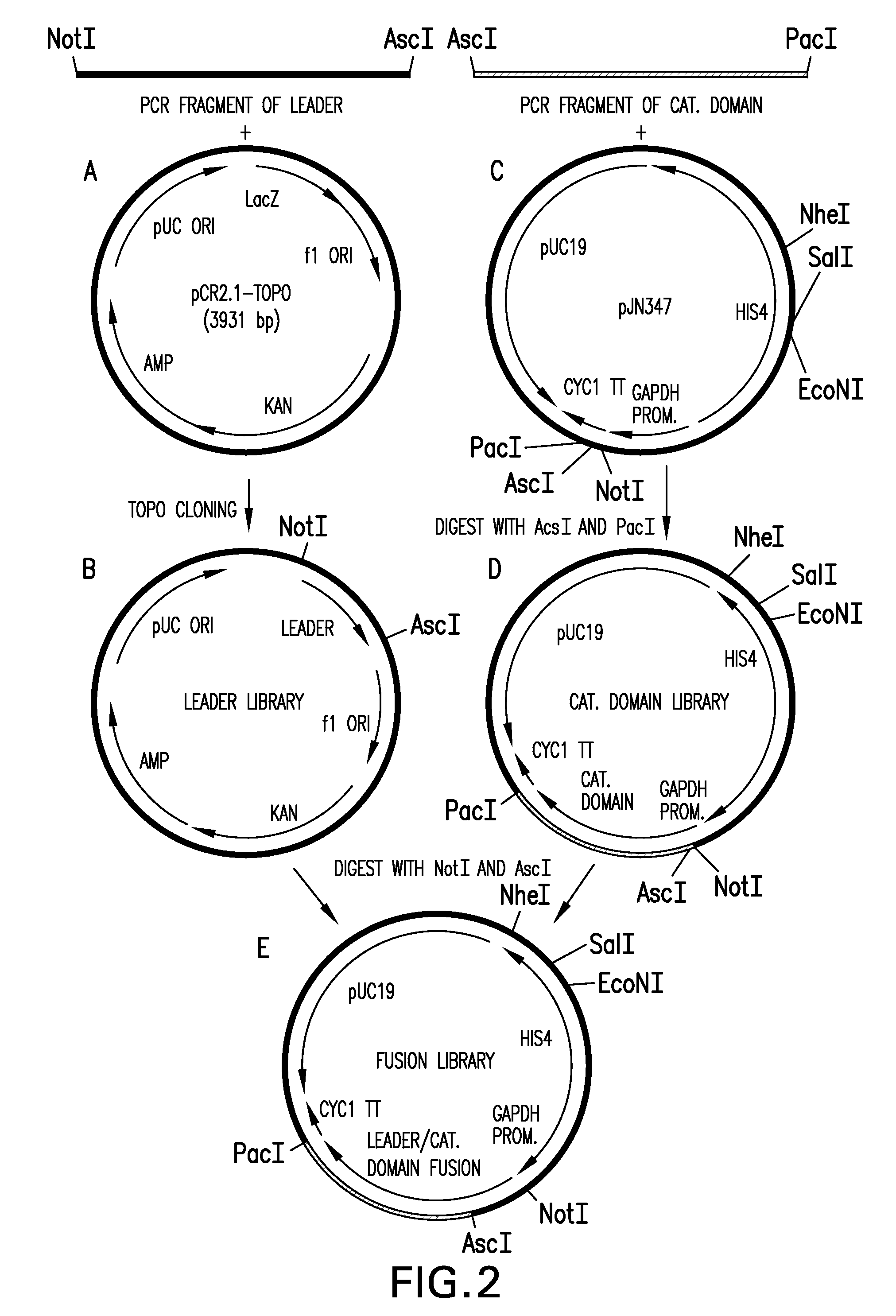N-Acetylglucosaminyltransferase III Expression in Lower Eukaryotes
a technology of n-acetylglucosaminyltransferase and eukaryotes, which is applied in the direction of transferases, peptide sources, applications, etc., can solve the problems of preventing the proper functioning of the enzyme, unable to ensure the in vivo processing of man, and insufficient udp-glcnac level in the host organism
- Summary
- Abstract
- Description
- Claims
- Application Information
AI Technical Summary
Benefits of technology
Problems solved by technology
Method used
Image
Examples
example 1
Cloning and Disruption of the OCH1 Gene in P. pastoris
[0282]Generation of an OCH1 Mutant of P. pastoris:
[0283]A 1215 bp ORF of the P. pastoris OCH1 gene encoding a putative α-1,6 mannosyltransferase was amplified from P. pastoris genomic DNA (strain X-33, Invitrogen, Carlsbad, Calif.) using the oligonucleotides 5′-ATGGCGAAGGCAGATGGCAGT-3′ (SEQ ID NO:3) and 5′-TTAGTCCTTCCAACTTCCTTC-3′ (SEQ ID NO:4) which were designed based on the P. pastoris OCH1 sequence (Japanese Patent Application Publication No. 8-336387). Subsequently, 2685 bp upstream and 1175 bp downstream of the ORF of the OCH1 gene were amplified from a P. pastoris genomic DNA library (Boehm, T. et al. (1999) Yeast 15(7):563-72) using the internal oligonucleotides 5′-ACTGCCATCTGCCTTCGCCAT-3′ (SEQ ID NO:47) in the OCH1 gene, and 5′-GTAATACGACTCACTATAGGGC-3′ T7 (SEQ ID NO:48) and 5′-AATTAACCCTCACTAAAGGG-3′ T3 (SEQ ID NO:49) oligonucleotides in the backbone of the library bearing plasmid lambda ZAP II (Stratagene, La Jolla, ...
example 2
Engineering of P. pastoris with α-1,2-Mannosidase to Produce Man5GlcNAc2-Containing IFN-β Precursors
[0286]An α-1,2-mannosidase is required for the trimming of Man8GlcNAc2 to yield Man5GlcNAc2, an essential intermediate for complex N-glycan formation. While the production of a Man5GlcNAc2 precursor is essential, it is not necessarily sufficient for the production of hybrid and complex glycans because the specific isomer of Man5GlcNAc2 may or may not be a substrate for GnTII. An och1 mutant of P. pastoris is engineered to express secreted human interferon-β under the control of an aox promoter. A DNA library is constructed by the in-frame ligation of the catalytic domain of human mannosidase IB (an α-1,2-mannosidase) with a sub-library including sequences encoding early Golgi and ER localization peptides. The DNA library is then transformed into the host organism, resulting in a genetically mixed population wherein individual transformants each express interferon-β as well as a synthe...
example 3
Generation of an och1 Mutant Strain Expressing an α-1,2-Mannosidase, GnTI and GnTII for Production of a Human-Like Glycoprotein
[0288]The 1215 bp open reading frame of the P. pastoris OCH1 gene as well as 2685 bp upstream and 1175 bp downstream was amplified by PCR (see also WO 02 / 00879), cloned into the pCR2.1-TOPO vector (Invitrogen) and designated pBK9. To create an och1 knockout strain containing multiple auxotrophic markers, 100 μg of pJN329, a plasmid containing an och1::URA3 mutant allele flanked with SfiI restriction sites was digested with SfiI and used to transform P. pastoris strain JC308 (Cereghino et al. (2001) Gene 263:159-169) by electroporation. Following incubation on defined medium lacking uracil for 10 days at room temperature, 1000 colonies were picked and re-streaked. URA+ clones that were unable to grow at 37° C., but grew at room temperature, were subjected to colony PCR to test for the correct integration of the och1::URA3 mutant allele. One clone that exhibit...
PUM
 Login to View More
Login to View More Abstract
Description
Claims
Application Information
 Login to View More
Login to View More - R&D
- Intellectual Property
- Life Sciences
- Materials
- Tech Scout
- Unparalleled Data Quality
- Higher Quality Content
- 60% Fewer Hallucinations
Browse by: Latest US Patents, China's latest patents, Technical Efficacy Thesaurus, Application Domain, Technology Topic, Popular Technical Reports.
© 2025 PatSnap. All rights reserved.Legal|Privacy policy|Modern Slavery Act Transparency Statement|Sitemap|About US| Contact US: help@patsnap.com



